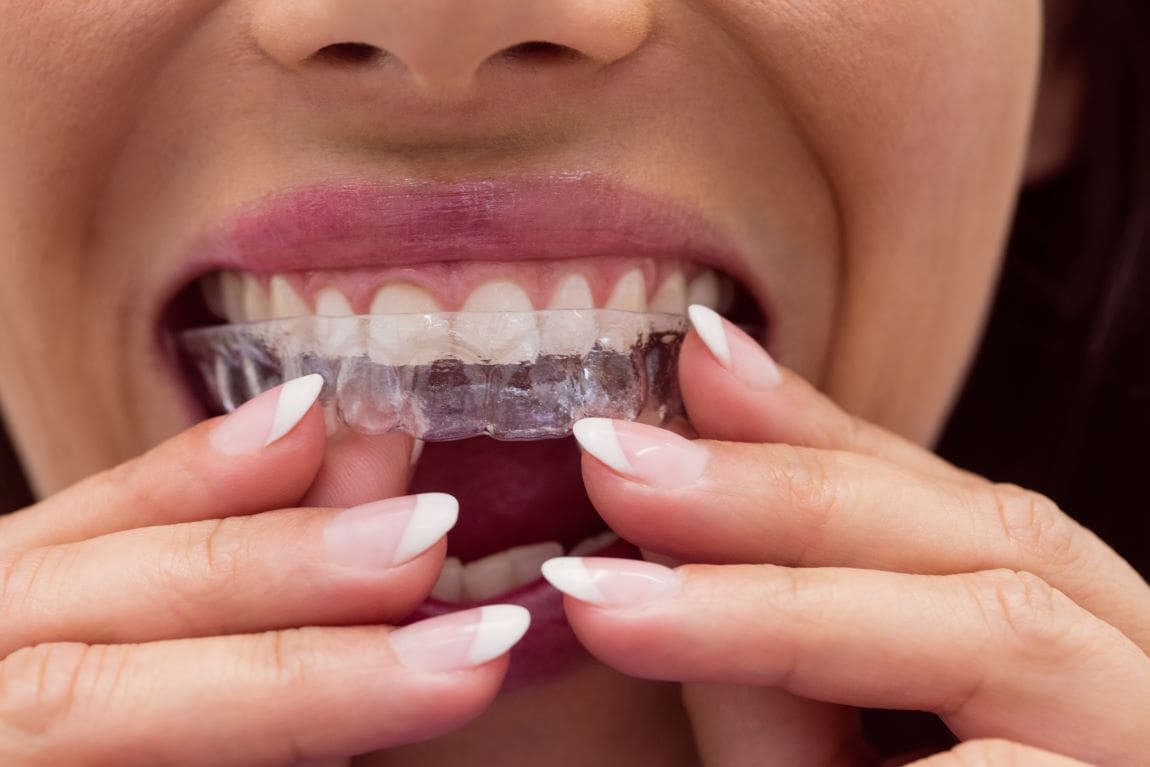Orthodontic aligners have transformed dental care, offering a discreet and comfortable alternative to traditional braces. Yet, as millions of people worldwide opt for these clear aligners, there’s a growing environmental problem that often goes unnoticed. These seemingly innocuous devices frequently end up in landfills, contributing to the global plastic pollution crisis.
The hidden problem

Plastic waste is an escalating environmental emergency, and orthodontic aligners are part of the problem. Once discarded, these aligners take decades to break down, and in doing so, they release microplastics – tiny particles less than 5 millimeters in size – into the environment.
Microplastics are everywhere: in the air we breathe, the water we drink, and even in the food we eat. They have been detected in remote regions of the planet, from deep ocean trenches to the Arctic ice, and even within human organs. Research suggests these particles can cause respiratory and cardiovascular issues, inflammation, and even increase the risk of certain cancers.
With over 700 million orthodontic aligners produced annually, it’s clear that dental care is contributing to this growing environmental crisis. Yet, this is a problem that has received far too little attention.
Why should we care?
Microplastics come in two main types. Primary microplastics are intentionally manufactured to be small, such as those found in cosmetics and industrial applications. Secondary microplastics are created when larger plastic items, like packaging or aligners, degrade over time due to sunlight, heat, or wear.

As larger plastic objects break down, they release microplastics into the environment. These particles can persist for hundreds of years, affecting wildlife and human health. Marine animals often ingest microplastics, mistaking them for food, which can lead to malnutrition, injury, and even death. As microplastics move up the food chain, they ultimately reach our plates, posing health risks to humans as well.
The environmental cost
Orthodontic aligners are typically made from thermoplastic materials like polyethylene terephthalate (PET) and polyurethane, chosen for their strength and flexibility. Patients wear these aligners for 22 hours a day, changing them every two weeks. Over time, these materials degrade – often in just a matter of days – due to constant exposure to saliva, temperature changes, and the mechanical stress of chewing.
When aligners are discarded, they either end up in landfills, where they slowly break down into microplastics, or are incinerated, releasing harmful chemicals into the air. Neither option is sustainable.
Research suggests that orthodontic aligners may begin to release microplastics during normal use, as they degrade in the mouth. This means that patients could unknowingly be contributing to microplastic pollution even before the aligners are discarded.
The threat to human health
The potential health impacts of microplastics are alarming. When we inhale or ingest these tiny particles, they can trigger inflammation and oxidative stress in the body. Oxidative stress occurs when there’s an imbalance between free radicals – unstable molecules – and antioxidants, leading to cellular damage. Over time, this can contribute to serious health conditions like heart disease, diabetes, and cancer.
Microplastics can also generate reactive oxygen species (ROS), molecules that can damage DNA and disrupt normal cell function. The long-term consequences of this cellular damage are still being studied, but some research suggests a link to chronic illnesses like neurodegenerative diseases, such as Alzheimers and dementia, and cancer.
Recycling may help
With the sheer volume of aligners being discarded every year, recycling is one potential solution. Innovative efforts are already underway to reduce the environmental impact of aligners. For instance, researchers at Manav Rachna International Institute of Research and Studies have developed an app called AlignTrack, which encourages responsible disposal of aligners.
AlignTrack helps users find recycling centers where old aligners can be turned into plastic pellets, which can then be used to manufacture other products. The app also provides instructions on how to properly prepare aligners for recycling and gathers user feedback on comfort and potential health concerns.
While recycling is a positive step, it’s not a perfect solution. The recycling process can be expensive and inefficient, and many types of plastics, including those used in aligners, are not easily recyclable. More importantly, recycling does not address the issue of microplastics being released during the aligners’ use.
The future of sustainable dental care
Ultimately, the key to solving the environmental impact of orthodontic aligners lies in finding more sustainable alternatives to the materials currently used. Researchers are exploring innovative options like biodegradable plastics or even “4D” aligners, which could adapt more dynamically to a patient’s mouth, potentially reducing the number of aligners needed over the course of treatment.
However, before these new materials can be widely adopted, they must be thoroughly tested to ensure they are safe for both patients and the environment. Some materials may introduce new health risks, such as cytotoxic effects, so careful research is crucial.
In the meantime, public awareness campaigns and more responsible disposal practices can help reduce the environmental footprint of orthodontic aligners. Consumers can push for change by supporting companies that prioritize sustainability and eco-friendly materials.
Orthodontic aligners have undoubtedly improved dental care, but their environmental cost is a significant concern. With millions of aligners being produced and discarded every year, the dental industry must take steps to reduce plastic waste and prevent further harm to the planet.
Investing in research, developing more sustainable materials, and promoting recycling initiatives are all essential steps forward. As consumers, we can also do our part by choosing eco-conscious brands and advocating for greener practices in dental care.
Aligners may be transforming smiles, but without meaningful action, they could also be contributing to the global environmental crisis. By raising awareness and pushing for change, we can help protect both our health and the health of our planet.
Sources: 360info | ScienceDirect | MDPI | Frontiers
Featured image: Despite their intended durability, orthodontic aligners can contribute to microplastic pollution in several ways. Credit: wavebreakmedia_micro | Freepik




